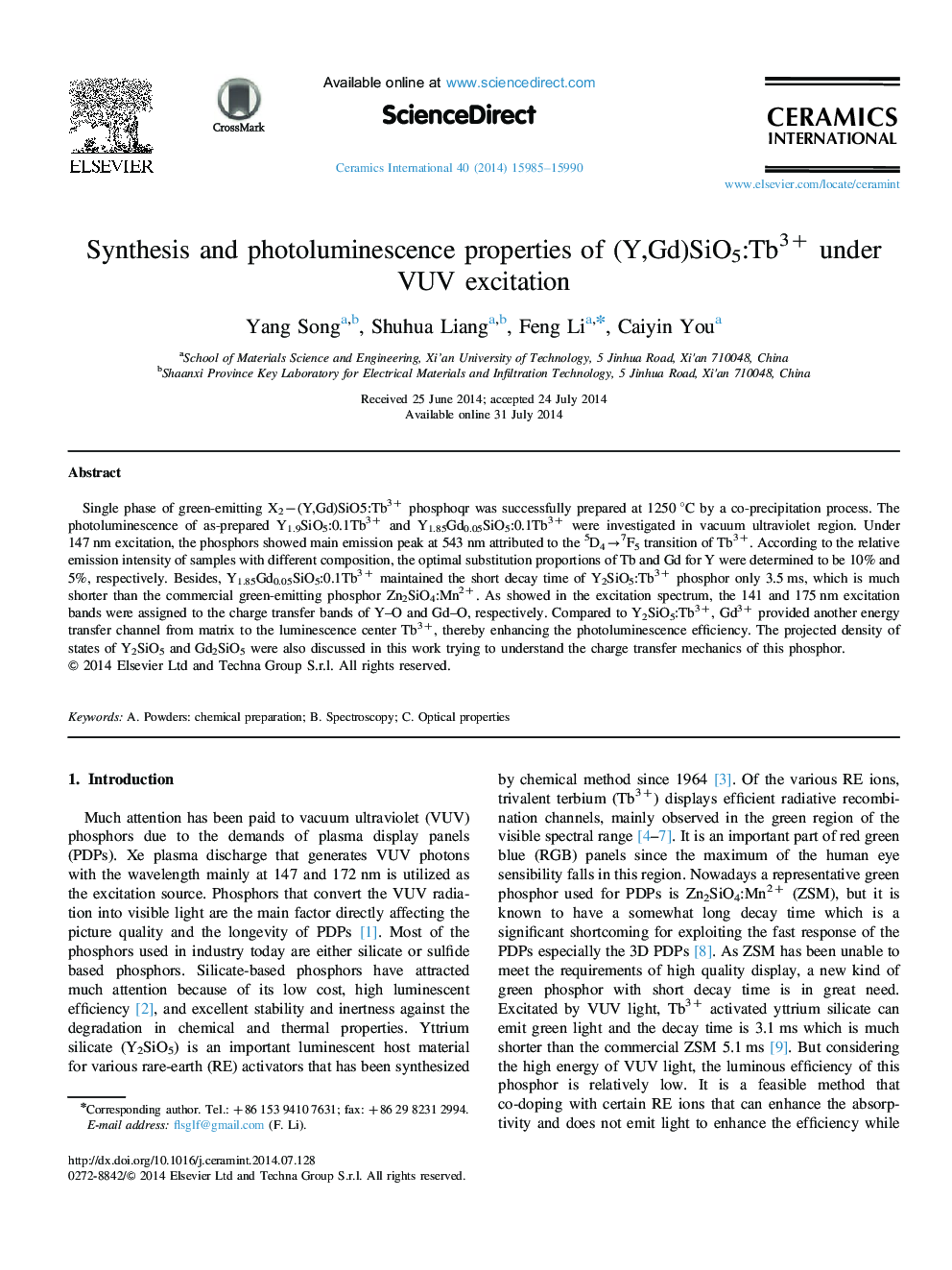| Article ID | Journal | Published Year | Pages | File Type |
|---|---|---|---|---|
| 10624922 | Ceramics International | 2014 | 6 Pages |
Abstract
Single phase of green-emitting X2â(Y,Gd)SiO5:Tb3+ phosphoqr was successfully prepared at 1250 °C by a co-precipitation process. The photoluminescence of as-prepared Y1.9SiO5:0.1Tb3+ and Y1.85Gd0.05SiO5:0.1Tb3+ were investigated in vacuum ultraviolet region. Under 147 nm excitation, the phosphors showed main emission peak at 543 nm attributed to the 5D4â7F5 transition of Tb3+. According to the relative emission intensity of samples with different composition, the optimal substitution proportions of Tb and Gd for Y were determined to be 10% and 5%, respectively. Besides, Y1.85Gd0.05SiO5:0.1Tb3+ maintained the short decay time of Y2SiO5:Tb3+ phosphor only 3.5 ms, which is much shorter than the commercial green-emitting phosphor Zn2SiO4:Mn2+. As showed in the excitation spectrum, the 141 and 175 nm excitation bands were assigned to the charge transfer bands of Y-O and Gd-O, respectively. Compared to Y2SiO5:Tb3+, Gd3+ provided another energy transfer channel from matrix to the luminescence center Tb3+, thereby enhancing the photoluminescence efficiency. The projected density of states of Y2SiO5 and Gd2SiO5 were also discussed in this work trying to understand the charge transfer mechanics of this phosphor.
Related Topics
Physical Sciences and Engineering
Materials Science
Ceramics and Composites
Authors
Yang Song, Shuhua Liang, Feng Li, Caiyin You,
